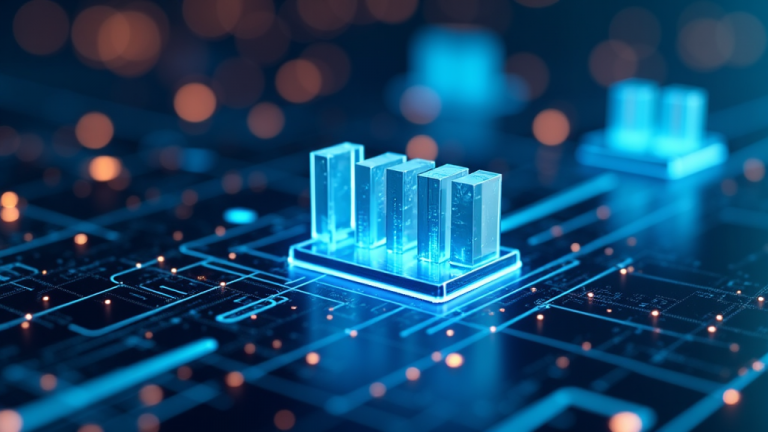
Edge Computing: The Key to Unlocking Efficiency and Innovation in Business
Edge computing has emerged as a crucial technology trend in recent years, offering businesses a transformative way to optimize operations, enhance customer experiences, and drive innovation. By processing data closer to where it’s generated, edge computing reduces latency, enhances security, and improves overall efficiency.
In this article, we’ll delve into 18 edge computing applications that can benefit various business domains, from manufacturing and retail to healthcare and transportation.
1. Predictive Maintenance in Manufacturing
Edge computing enables real-time monitoring of equipment and machinery, allowing for predictive maintenance and minimizing downtime. By analyzing sensor data and machine learning algorithms, businesses can anticipate potential failures, reducing maintenance costs and improving overall efficiency.
2. Smart Retail Stores
Edge computing powers smart retail stores by enabling real-time inventory management, personalized marketing, and optimized store layouts. By leveraging cameras, sensors, and analytics, retailers can improve customer experiences, increase sales, and reduce waste.
3. IoT Sensor Data Processing in Energy Management
Edge computing facilitates the processing of IoT sensor data from energy meters, allowing businesses to optimize energy consumption, detect anomalies, and predict energy demand. This enables more efficient resource allocation, cost savings, and a reduced carbon footprint.
4. Digital Signage for Enhanced Customer Experience
Edge computing powers digital signage systems in retail, transportation hubs, and other public spaces, providing customers with real-time information, promotions, and entertainment. This enhances the overall customer experience, increases dwell time, and drives sales.
5. Smart City Infrastructure Management
Edge computing enables efficient management of city infrastructure, including traffic lights, parking systems, and waste management. By leveraging IoT sensors and analytics, cities can optimize resource allocation, reduce congestion, and improve public services.
6. Industrial Automation and Control
Edge computing powers industrial automation and control systems, enabling real-time monitoring and optimization of manufacturing processes, quality control, and supply chain management. This improves product quality, reduces waste, and increases productivity.
7. Medical Imaging Analysis
Edge computing facilitates the analysis of medical imaging data, such as X-rays, MRIs, and CT scans, allowing for rapid diagnosis and treatment decisions. By leveraging AI and machine learning algorithms, edge computing can improve patient outcomes, reduce healthcare costs, and enhance the quality of care.
8. Predictive Analytics in Finance
Edge computing enables predictive analytics in finance by processing large datasets from various sources, including trading platforms, customer data, and market trends. This allows businesses to anticipate market shifts, optimize investment strategies, and minimize risk.
9. Smart Traffic Management
Edge computing powers smart traffic management systems, enabling real-time traffic monitoring, optimized routing, and predictive analytics. By leveraging IoT sensors and machine learning algorithms, cities can reduce congestion, improve air quality, and enhance the overall driving experience.
10. Real-Time Analytics in Sports and Entertainment
Edge computing facilitates real-time analytics in sports and entertainment by processing data from various sources, including ticketing systems, social media, and sensor data. This allows businesses to optimize fan experiences, increase revenue, and improve team performance.
11. Autonomous Vehicles and Transportation Systems
Edge computing powers autonomous vehicles and transportation systems, enabling real-time navigation, traffic management, and predictive analytics. By leveraging AI and machine learning algorithms, edge computing can improve safety, reduce congestion, and enhance the overall driving experience.
12. Cybersecurity Threat Detection
Edge computing facilitates cybersecurity threat detection by processing data from various sources, including network traffic, sensors, and user behavior. This allows businesses to anticipate and respond to security threats in real-time, reducing the risk of data breaches and cyber attacks.
13. Smart Homes and Buildings
Edge computing powers smart homes and buildings, enabling energy-efficient management, optimized lighting, and enhanced security. By leveraging IoT sensors and analytics, residents can improve their quality of life, reduce energy costs, and increase property values.
14. Predictive Maintenance in Agriculture
Edge computing enables predictive maintenance in agriculture by processing data from various sources, including weather stations, soil sensors, and equipment monitoring systems. This allows farmers to anticipate potential issues, reduce downtime, and optimize crop yields.
15. Real-Time Inventory Management
Edge computing facilitates real-time inventory management by processing data from various sources, including stock levels, supply chain information, and demand analytics. This allows businesses to optimize inventory levels, reduce waste, and improve customer satisfaction.
16. Smart Water Management
Edge computing powers smart water management systems, enabling efficient use of water resources, optimized treatment processes, and predictive analytics. By leveraging IoT sensors and machine learning algorithms, cities can reduce water waste, improve public health, and enhance the overall quality of life.
17. Digital Twin in Manufacturing
Edge computing facilitates the creation of digital twins in manufacturing by processing data from various sources, including equipment monitoring systems, sensor data, and production analytics. This allows businesses to optimize production processes, improve product quality, and reduce waste.
18. Real-Time Quality Control
Edge computing enables real-time quality control by processing data from various sources, including sensors, inspection systems, and machine learning algorithms. This allows businesses to optimize product quality, reduce defects, and improve overall customer satisfaction.
By leveraging these edge computing applications, businesses can drive innovation, enhance efficiency, and improve customer experiences across various industries. As the technology continues to evolve, we can expect even more exciting use cases to emerge, further transforming the way businesses operate and interact with their customers.



